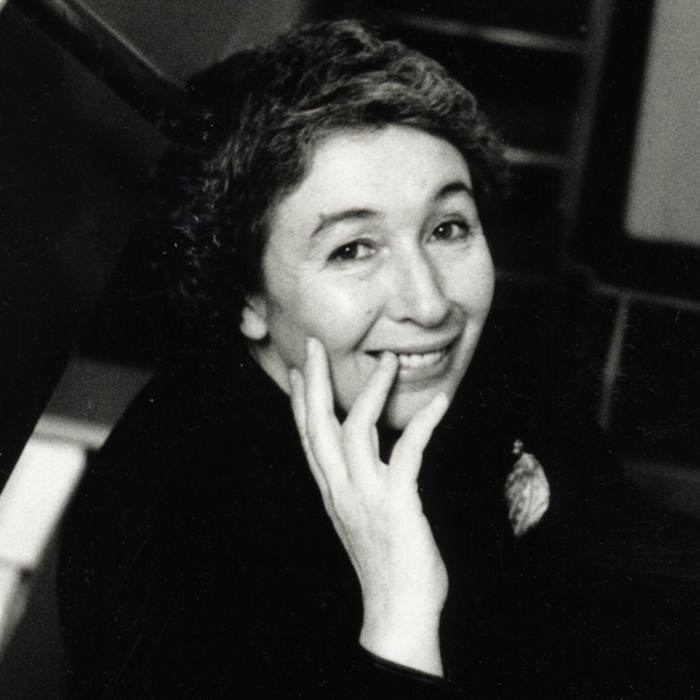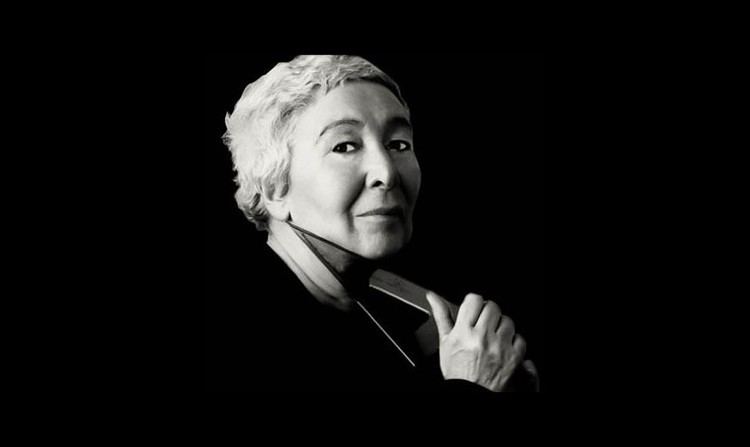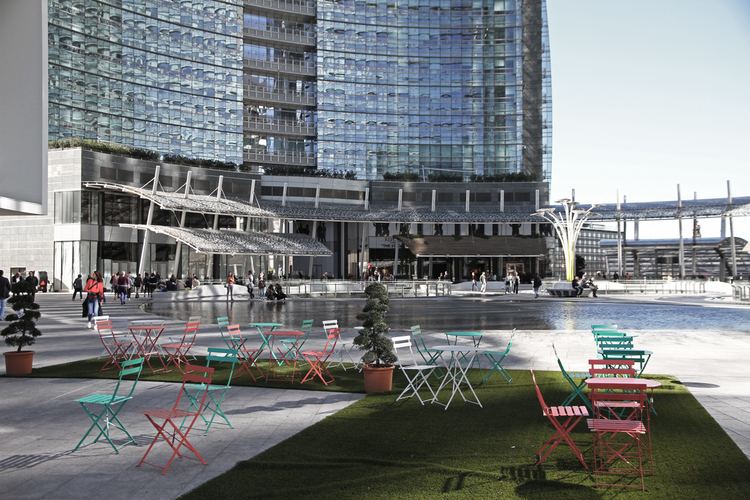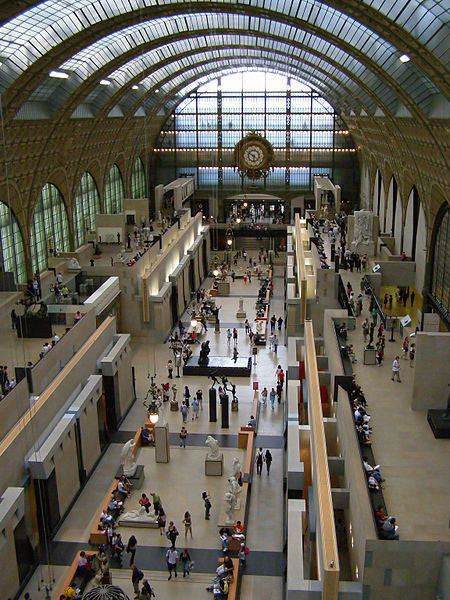Name Gae Aulenti Role Architect | Children Giovanna Buzzi Awards Praemium Imperiale | |
 | ||
Died October 31, 2012, Milan, Italy Education Polytechnic University of Milan (1953) Parents Aldo Aulenti, Virginia Gioia Similar Victor Laloux, Ettore Sottsass, Cini Boeri | ||
Gae aulenti square cinematic footage of milan s skyscrapers in 4k
Gae Aulenti ([ˈɡaːe auˈlɛnti]; 4 December 1927 – 31 October 2012) was a prolific Italian architect, whose work spans industrial and exhibition design, furniture, graphics, stage design, lighting and interior design. She was well known for several large-scale museum projects, including the Musée d'Orsay in Paris (1980–86), the Contemporary Art Gallery at the Centre Pompidou in Paris, the restoration of Palazzo Grassi in Venice (1985–86), and the Asian Art Museum of San Francisco with HOK (firm) (2000–2003). Aulenti was one of the few women designing in the postwar period in Italy, where Italian designers sought to make meaningful connections to production principles beyond Italy. This avant-guarde design movement blossomed into an entirely new type of Italian architecture, one full of imaginary utopias leaving standardization to the past.
Contents
- Gae aulenti square cinematic footage of milan s skyscrapers in 4k
- Emiliana martinelli incontra la figlia dell architetto gae aulenti 20 marzo 2013
- Early life and education
- Work and career
- Selected Individual and Group Exhibitions
- Style
- Death
- Awards
- Publications by the Artist
- References

Aulenti's deep involvement in the Milan design scene of the 1950s and 1960s formed her into an architect respected for her analytical abilities to navigate metropolitan complexity no matter the medium. Her conceptual development can be followed in the design magazine Casabella, to which she contributed regularly.

Her contemporaries were Vittorio Gregotti, Giancarlo de Carlo and Aldo Rossi.

Emiliana martinelli incontra la figlia dell architetto gae aulenti 20 marzo 2013
Early life and education

Born as Gaetana Aulenti, a native of Palazzolo dello Stella (Friuli), Gaetana Aulenti (Gae, as she was known, is pronounced “guy”) studied to be an architect at the Milan School of Architecture of the Polytechnic University, and graduated in 1954 as one of two women in a class of 20. She grew up playing the piano and reading books. She told The Times that she studied architecture in defiance of her parents’ hope that she would become “a nice society girl.” In 1954, she was one of two women in a class of 20 to graduate from the Milan Polytechnic School of Architecture. She soon joined the staff of Casabella, a design magazine, and joined with her peers in rejecting the architecture of masters like Le Corbusier, Mies van der Rohe and Walter Gropius. They called themselves the “Neo Liberty” movement.
Work and career

Aulenti began her career as a private-practicing architect and freelance designer out of Milan in 1954. Her architectural practice included many interior flat designs for corporate clients including Fiat, Banca Commerciale Italiana, Pirelli, Olivetti, and Knoll International. Her freelance design work included products for Poltronova, Candle, Ideal Standard, Louis Vuitton, and Artemide to name a few.

Branching into written publication, Aulenti joined the editorial staff at the design magazine Casabella-Continuità from 1955 until 1965 as an art director, doing graphic design work, and later served on the board of directors for the renamed Lotus International magazine (based in Milan from 1974 onwards). During that time she became part of a group of young professionals influenced by the philosophy of Ernesto Nathan Rogers.

Aulenti taught at Venice School of Architecture as an assistant instructor in architectural composition from 1960 to 1962 and at the Milan School of Architecture of the Polytechnic University from 1964 to 1967. With these experiences, she became a visiting lecturer at congresses and professional institutions in Europe and North America from 1967 onwards. She sought membership in two of them, American Society of Interior Designers, 1967 and Member of Movimento Studi per I'Architettura, Milan, 1955-61. During that time she also designed for a department store, La Rinascente and later designed furniture for Zanotta, where she created two of her most well known pieces, the "April" folding chair which was made from stainless steel with a removable cover, and her "Sanmarco" table constructed from plate-glass. Transitioning from teaching, Aulenti joined Luca Ronconi as a collaborator in figurative research for Laboratorio di Progettazione Teatrale out of Prato, Florence (1976–79). She then also served as vice-president of the Italian Association Of Industrial Design (ADI).

In 1981 she was chosen to turn the 1900 Beaux Arts Gare d'Orsay train station, a spectacular landmark originally designed by Victor Laloux, into the Musée d’Orsay, a museum of mainly French art from 1848 to 1915. Her work on the Musée d’Orsay led to commissions to create a space for the National Museum of Modern Art at the Centre Georges Pompidou in Paris; the restoration of the Palazzo Grassi as an art museum in Venice; the conversion of an old Italian embassy in Berlin into an Academy of Science; and the restoration of a 1929 exhibition hall in Barcelona as Museu Nacional d'Art de Catalunya. In San Francisco, she transformed the city’s Beaux Art Main Library into a museum of Asian art. In 2011, Aulenti oversaw the expansion of Perugia Airport.
Aulenti also occasionally worked as a stage designer for Luca Ronconi, including for Samstag aus Licht (1984). She also planned six stores for the fashion designer Adrienne Vittadini, including one on Rodeo Drive in Los Angeles. (She even designed the mannequins.)
Her career ended with over 200 built works.
Selected Individual and Group Exhibitions
Style
Aulenti worked in the post-war period of Italy while creating pieces that spanned across a wide variety of styles and influences. She always wanted the focus of the room to be the occupants, believing people make the room a room. She had a modest style: Vogue quoted her as saying "advice to whoever asks me how to make a home is to not have anything, just a few shelves for books, some pillows to sit on. And then, to take a stand against the ephemeral, against passing trends...and to return to lasting values."
Death
Aulenti died in Milan on 31 October 2012, just weeks prior to her 85th birthday. She was suffering from chronic illness and made her last public appearance on 16 October, when she received the career prize at the Milan Triennale.
